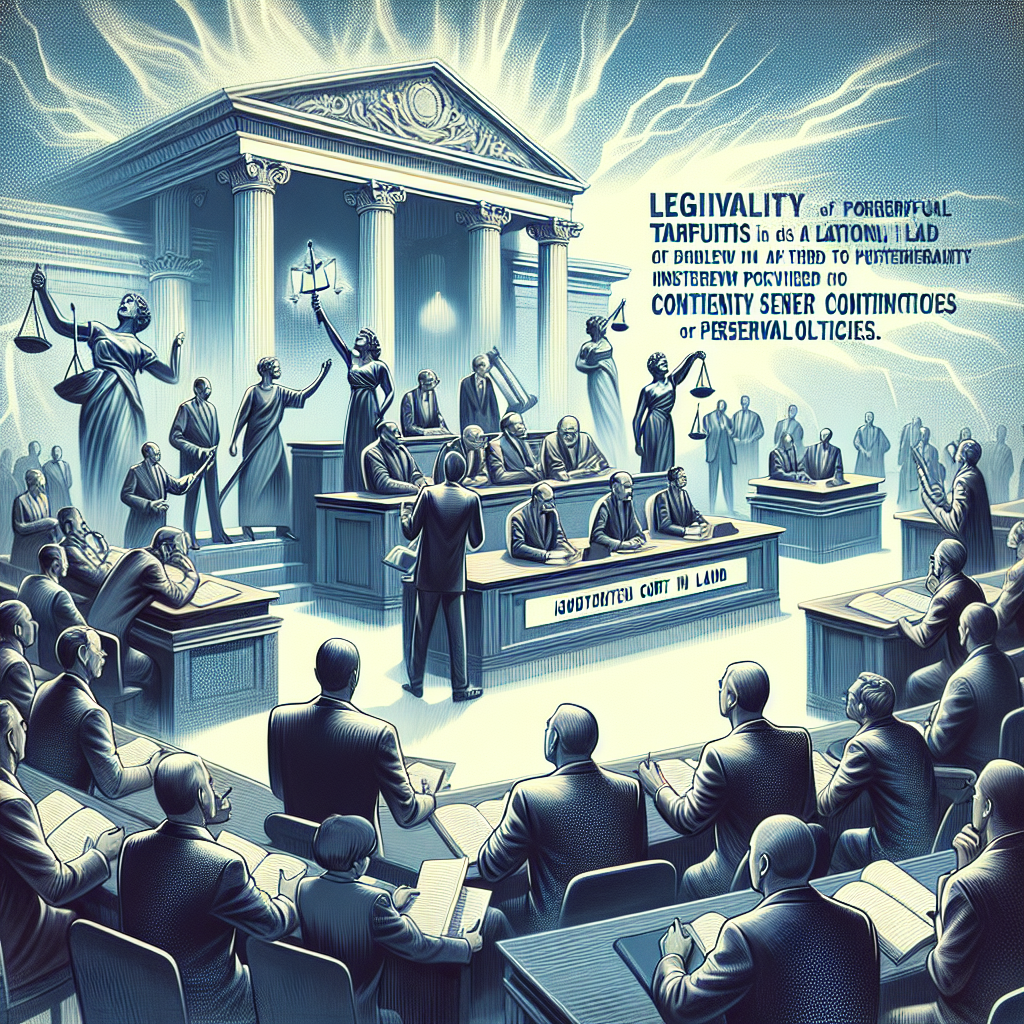On Wednesday, November 5, the United States Supreme Court held oral arguments on the legality of President Trump’s tariffs. The final decision from the court will determine the fate of Trump’s tariffs, making this oral argument session highly anticipated.
The Supreme Court’s review only pertains to the tariffs imposed by Trump under the International Emergency Economic Powers Act (IEEPA), while tariffs imposed under other legal provisions are not affected.
The IEEPA grants the president powers to “regulate” imports in response to certain emergency situations involving specific countries. However, small businesses challenging Trump’s tariffs and states run by the Democratic Party argue that the original intent of the law was not to give the president authority to impose tariffs.
This ruling carries significant implications. President Trump has stated that he uses tariffs to pressure foreign countries to end global conflicts, but an unfavorable decision could bring about economic disasters.
During the lengthy two and a half hours of oral arguments, the Supreme Court debated whether Trump’s invocation of IEEPA to implement global tariffs exceeded his authority.
Most justices cast doubt on Trump’s use of emergency powers to enact tariffs.
During the arguments, the three liberal justices were clear in their opposition from the onset. Some conservative justices raised sharp questions for Deputy Solicitor General John Sauer, representing the Trump administration, indicating reservations about Trump’s tariff stance.
Chief Justice John Roberts stated that while the government uses the law to grant the president powers to impose tariffs on any country’s products in any quantity and for any length of time under a national emergency, “I’m not saying it doesn’t exist, but it is a substantial power.”
Roberts suggested that the wording of IEEPA, granting the president authority to “regulate” imports in times of national emergency, might not clearly prove that the law gives the president the power to impose import tariffs.
However, Justice Samuel Alito proposed that the provision in IEEPA authorizing economic regulation also grants the government the authority to levy tariffs.
Alito presented a hypothetical scenario: if Congress gives the president the power to manage national park admissions, does that also give the president the authority to collect admission fees?
Justice Neil Gorsuch questioned Sauer at length on the issue of separation of powers. Gorsuch believed that if the court allows Congress to broadly “delegate” tariff powers to the president, Congress might relinquish other constitutional powers without constraints.
Nevertheless, Justice Roberts stated that tariffs differ from other tax types under exclusive congressional jurisdiction because tariffs are “foreign-facing,” and the president typically has broad latitude in handling foreign affairs.
The challenge to Trump’s tariff policy attracted prominent figures from the political and economic sectors to the Supreme Court. Government officials, members of Congress, and even a well-known comedian were present in the courtroom during the debate.
Shortly before the start of the arguments, U.S. Treasury Secretary Scott Bessent and Commerce Secretary Howard Lutnick took their seats in the courtroom.
Also present were U.S. Trade Representative Jamieson Greer, House Ways and Means Committee Chairman Jason Smith, as well as Senators Mike Lee, Amy Klobuchar, and Edward Markey.
In a surprising twist, comedian John Mulaney was also spotted at the Supreme Court. He went straight to a seat in the back row.
Neal Katyal, the lawyer representing small businesses challenging Trump’s tariffs, had previously appeared on Mulaney’s Netflix show “Everybody’s Live with John Mulaney.” Mulaney had also been a guest on Katyal’s podcast, Courtside.
Introducing Mulaney on the podcast, Katyal said, “It wasn’t until last year that I found out he’s a constitutional junkie. Honestly, he regularly texts me, asking me various questions about Supreme Court cases. And his questions are really great.”
On Wednesday, the U.S. stock market saw gains. The sharp questions raised by the Supreme Court on Trump’s tariff policy boosted hopes in the market that some tariffs could potentially be repealed. Stocks of chip manufacturers like Advanced Micro Devices (AMD) rebounded from valuation concerns that had previously troubled the market.
The Dow Jones Industrial Average rose by 225.76 points, or 0.48%, to close at 47,311.00 points; the S&P 500 index climbed by 0.37% to close at 6,796.29 points; and the Nasdaq Composite Index increased by 0.65% to close at 23,499.80 points.
President Trump stated on Tuesday that the Supreme Court’s decision is a “life and death moment” for America.
If the court rules against Trump, the government will have to refund the tariffs already collected. Justice Barrett expressed concerns about the potentially “very chaotic” refund process.
According to data from the U.S. Customs and Border Protection as of September 23, the federal government has collected $90 billion in revenue from these tariffs.
Neal Katyal, the lawyer representing small businesses challenging Trump’s tariffs, suggested that the court could make a ruling that is “prospective only,” indicating that the government would not need to issue refunds.
Wilbur Ross, who served as the Commerce Secretary during Trump’s first term, told CNN after the Supreme Court arguments that the main argument from the side challenging the tariffs was that “tariffs … are taxes, but the power to impose taxes belongs solely to Congress,” whereas emergency powers allow for the imposition of “fees, which can also be considered a form of taxation.”
Ross speculated that at most, the Supreme Court might overturn a few specific tariffs.
If the court rules in favor of Trump, the president could potentially have broad powers to oversee the U.S. economy in situations he deems as emergencies without congressional involvement.
(Some information in this article was referenced from The Wall Street Journal.)

